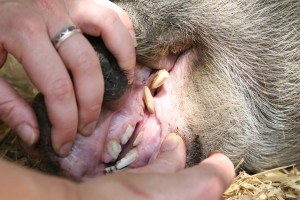
Geneva: Recognising that animals, particularly wild animals, are the source of more than 70% of all emerging infectious diseases in humans, many of which are caused by novel viruses, World Health Organisation (WHO), World Organisation for Animal Health (OIE) and United Nations Environment Programme (UNEP) today issued interim guidance on reducing public health risks associated with the sale of live wild mammals in traditional food markets around the world said.
The agencies pointed at the repeated emergence of zoonotic diseases and the linkages of some of them along the value chain of the wildlife trade, and said while most emerging infectious diseases – such as Lassa fever, Marburg haemorrhagic fever, Nipah viral infections and other viral diseases – have wildlife origins, within the coronavirus family too, zoonotic viruses were linked to the severe acute respiratory syndrome (SARS) epidemic in 2003 and the Middle East respiratory syndrome (MERS), which was first detected in 2012.
“The COVID-19 pandemic stems from the introduction of the novel coronavirus, SARS-CoV-2, into human populations. Although the specific mechanism of SARS-CoV-2 emergence has not been definitively identified, at some point or over time, interactions may have occurred that allowed for cross- and perhaps multiple-species pathogen transmission.”
It may be pointed out that the first case of COVID-19 was reported from the animal market in Wuhan in China. The agencies said when wild animals are kept in cages or pens, slaughtered and dressed in open market areas, these areas become contaminated with body fluids, faeces and other waste, increasing the risk of transmission of pathogens to workers and customers and potentially resulting in spill over of pathogens to other animals in the market.
“Such environments provide the opportunity for animal viruses, including coronaviruses, to amplify themselves and transmit to new hosts, including humans,” they said.
While noting that wild mammals, in particular, pose a risk for the emergence of new diseases as they come into markets without any way to check if they carry dangerous viruses, the guidance further called on countries to suspend the sale of captured live wild mammals in food markets as an emergency measure – “There is a risk of direct transmission to humans from coming into contact with the saliva, blood, urine, mucus, faeces, or other body fluids of an infected animal, and an additional risk of picking up the infection from contact with areas where animals are housed in markets or objects or surfaces that could have been contaminated with such viruses. “
Globally, traditional markets play a central role in providing food and livelihoods for large populations, and the agencies said banning the sale of these animals can protect people’s health – both those working there and those shopping there.
The guidance released today assumes significance in view of WHO’s earlier call for further studies to trace the origin of COVID-19 virus after its team of scientists visited Wuhan and submitted its report last month stating that the role of animal markets there was still unclear. It had recommended further studies to understand the earliest human cases and clusters, to trace the animals sold at markets in and around Wuhan, and to better understand the range of potential animal hosts and intermediaries. The international team of scientists was on their Wuhan field visit, from January 14 to February 10, 2021.
However, the latest interim guidance today stated that determining whether or not and which wildlife species contributed to an initial animal-to-human transmission of the virus remains a critical research question.
– global bihari bureau





